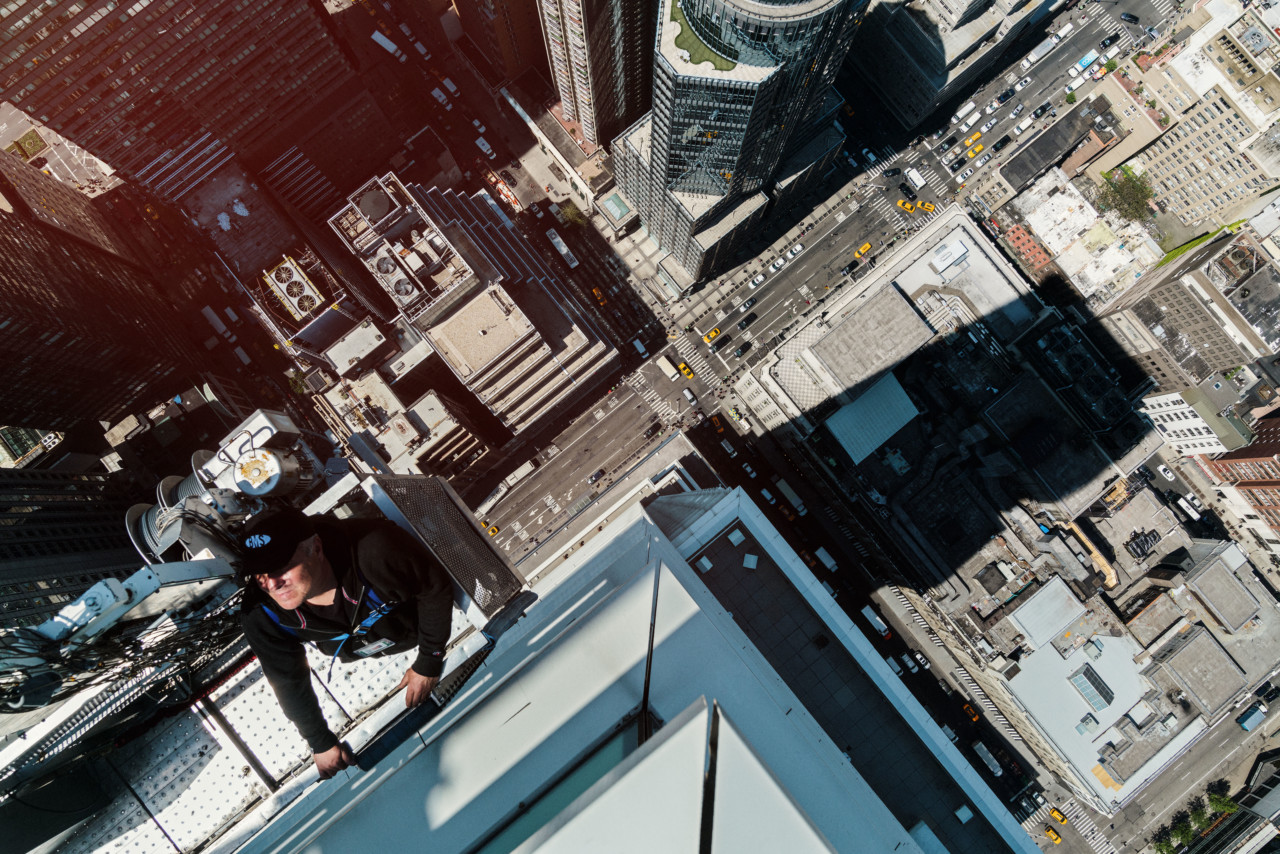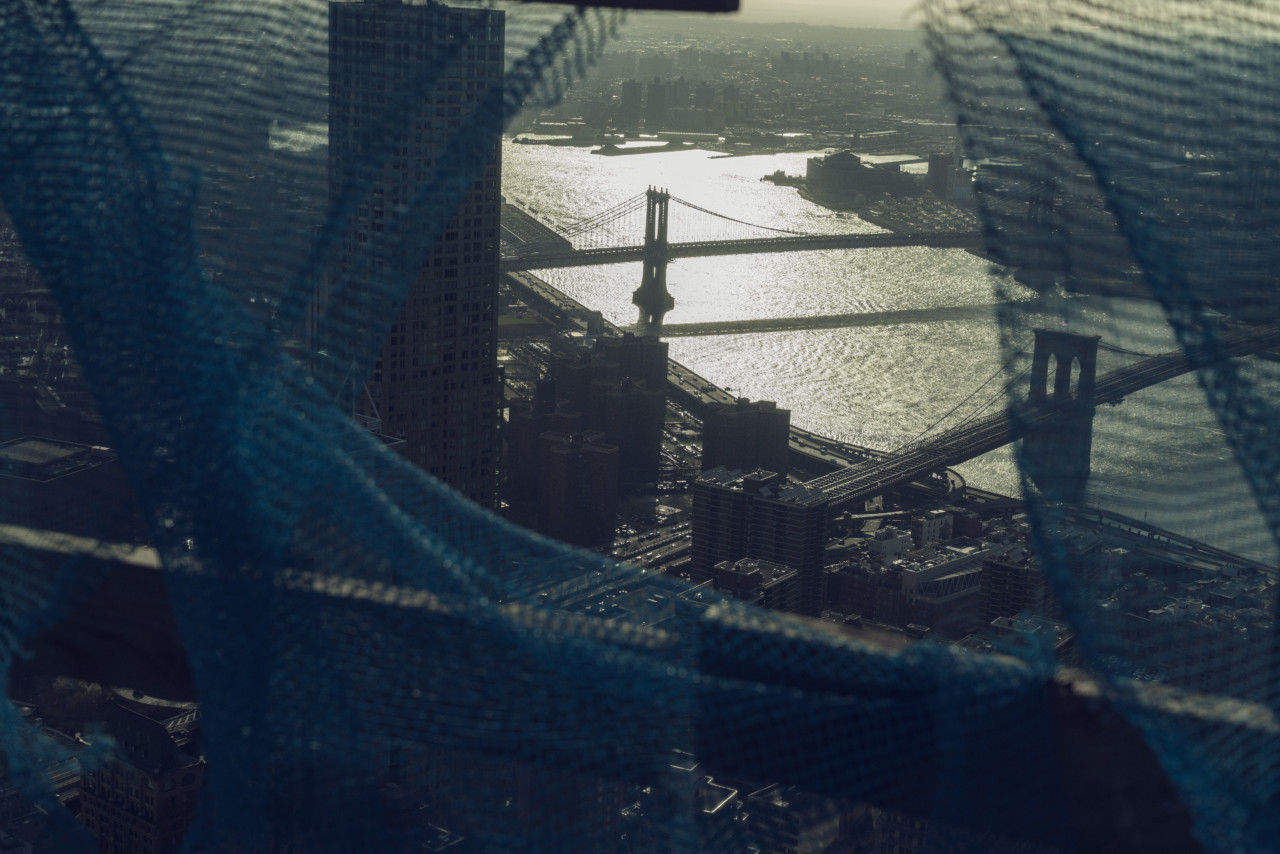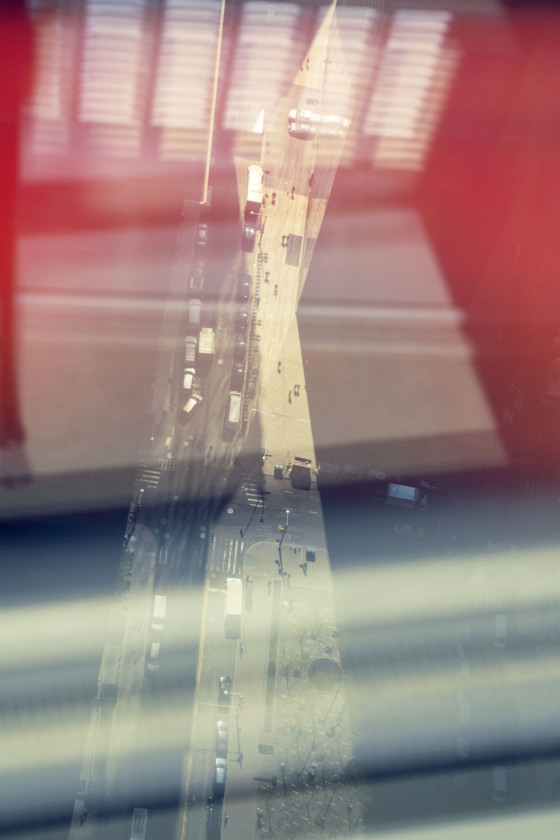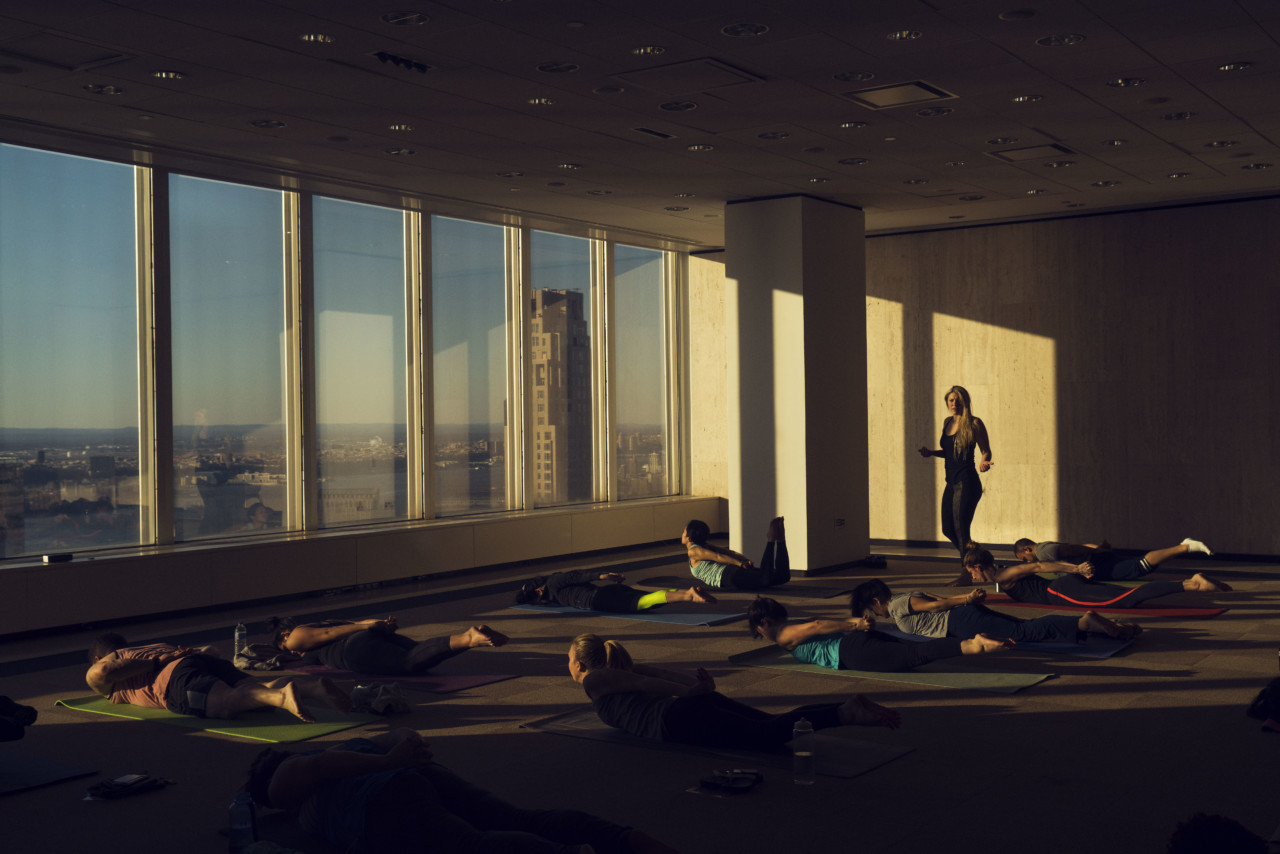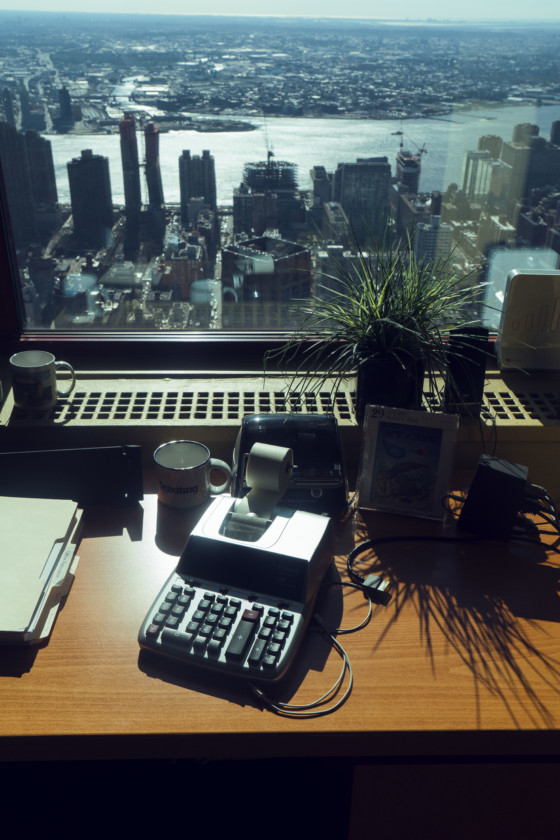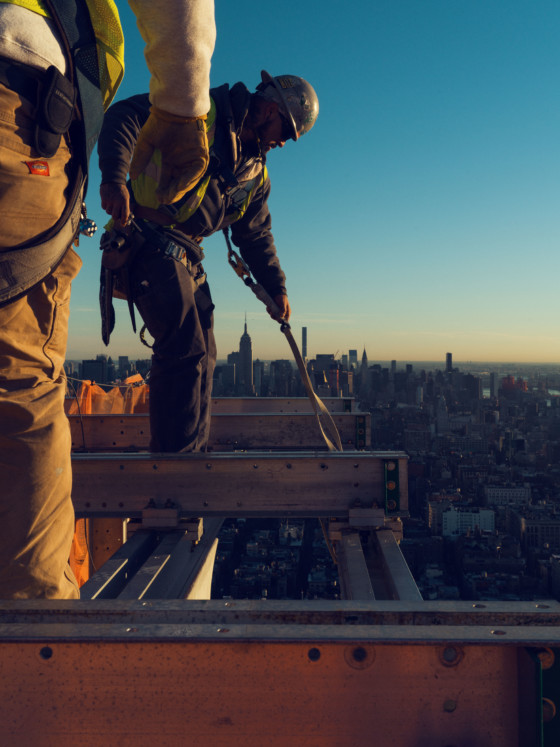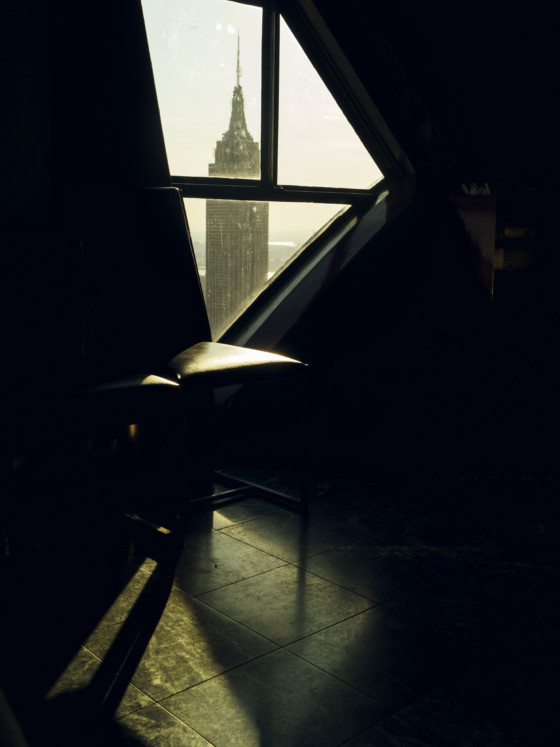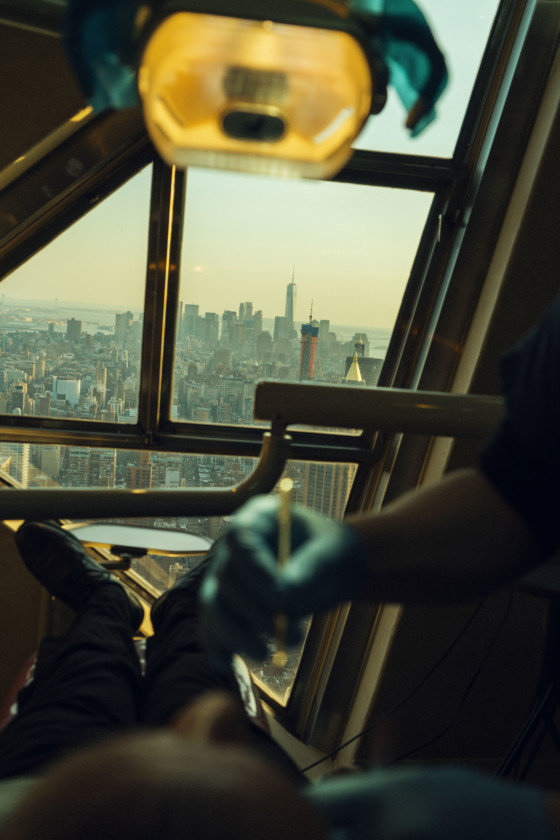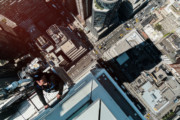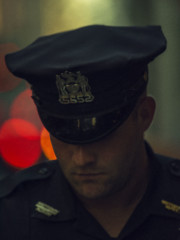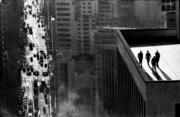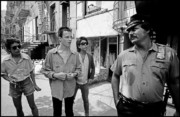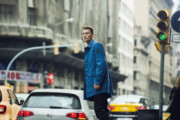The Society in the Sky
Christopher Anderson heads upwards to photograph the residents in New York’s cloud-level colony
As part of a month-long celebration of New York, and the role it has played in Magnum Photos’ history – as well as the working practices of many of the collective’s members – we look at Christopher Anderson’s work on the city’s most elevated residents.
This body of work is available as a Magnum Distro – and is part of the editor’s choice selection of New York related products on the Magnum Shop. You can see the full selection of New York fine prints and products, here.
New York City is currently undergoing a surge skywards. According to The New York Times, the city currently has 21 buildings with roof heights above 800 feet, and seven of them have been completed in the past 15 years; three of those the past 36 months. These buildings include some of the tallest residential buildings in the world, and with residential buildings come inhabitants, staff, laborers and so on. Magnum’s Christopher Anderson headed upwards to get a new, vertiginous perspective on a city he had lived in for many years, and to take a portrait of life in the lofty microcosm, glimpsing into private apartments, offices, a dental surgery, a yoga class, and the inner workings of the mammoth construction going into this new cloud-level colony.
When architect Ernest Flagg designed New York’s Singer Tower, which was completed in 1908, he did so with a sense of careful foreboding about a possible future for the city. He feared the uncontrolled rise of skyscrapers could leave the streets below in the shade as they, like trees in a rainforest, battled upwards towards the sun. His design for the building that would be – for a time – the tallest in New York and the world, attempted to set a standard that would eschew this problem by starting the towering part of the building several stories up. He hoped that this mode of designing skyscrapers with towers limited to one-quarter of a site’s area would become the norm, resulting in a skyline that would be “picturesque, interesting, and beautiful”.
"The views from that high feel very removed from everything, like being in an airplane"
- Christopher Anderson
This approach fell out of fashion during the century that followed, as a race for the sky witnessed competitively taller and taller buildings piercing new holes into the New York skyline. The Singer building was taken down manually in 1967 and 68, but has a legacy of being the tallest building in the world to be peacefully demolished. We cannot know what Flagg might make of the current state of New York architecture, as skyscrapers ambitiously forge into unchartered airspace, but if he had concerns about how skyscrapers might obtrude on street-level life below, one might wonder what he’d make of the new city in the sky with new communities based on a shared altitude.
“It’s lonely at the top, literally,” says Christopher Anderson, reflecting on his assignment exploring the homes of this growing community. His photo essay, which includes some vertigo-inducing shots, looking down at the streets far below, has faint echoes of the work of Magnum stalwart René Burri, who once said, “Whenever there was a high-rise building, I was climbing up and knocked at the door and said, ‘Can I take a picture?’” Anderson not only looks bravely down, but peers across at the views, documents the orange netting shrouding construction workers, and takes a candid look at the mundanity of everyday life that continues as usual at 800 feet, in offices, restaurants and living rooms, in very much the same way as at ground level, save for the almost unbroken blue of the sky that fills the windows.
“The views from that high feel very removed from everything,” says Anderson, “like being in an airplane.” Staying in the buildings throughout the course of an entire day, Anderson photographs the sun pouring in, unobstructed by other buildings, capturing the reddish glow of magic hour before sunset in Trump Tower at United Nations Plaza, in the 86th-floor home of Tatyana Enkin and Warren Estis, two of the residents he meets.
"These distros were the daily working tools of photo editors, used for previewing, copywriting and layout before publication"
-
Prior to digitisation, print distributions, or ‘distros’, were the means by which stories from the world’s photographers would land on the desks of photo editors. These distros were the working tools of photo editors, used for previewing, copywriting and layout before publication. As an agency Magnum has – since its founding in 1947 – produced hundreds of these press sets each year.
Harking back to the days of analogue, our contemporary version of the distro makes the work of Magnum photographers available to purchase as an unsigned set of eight 8×10” digital C-type prints. Each distro bears the Magnum Collection stamp and the photographer’s copyright stamp, and is accompanied by a printed page detailing the story and individual captions, each numbered as part of a limited edition of 100.
Shop Anderson’s images available as distribution set exclusively through the Magnum Shop.


